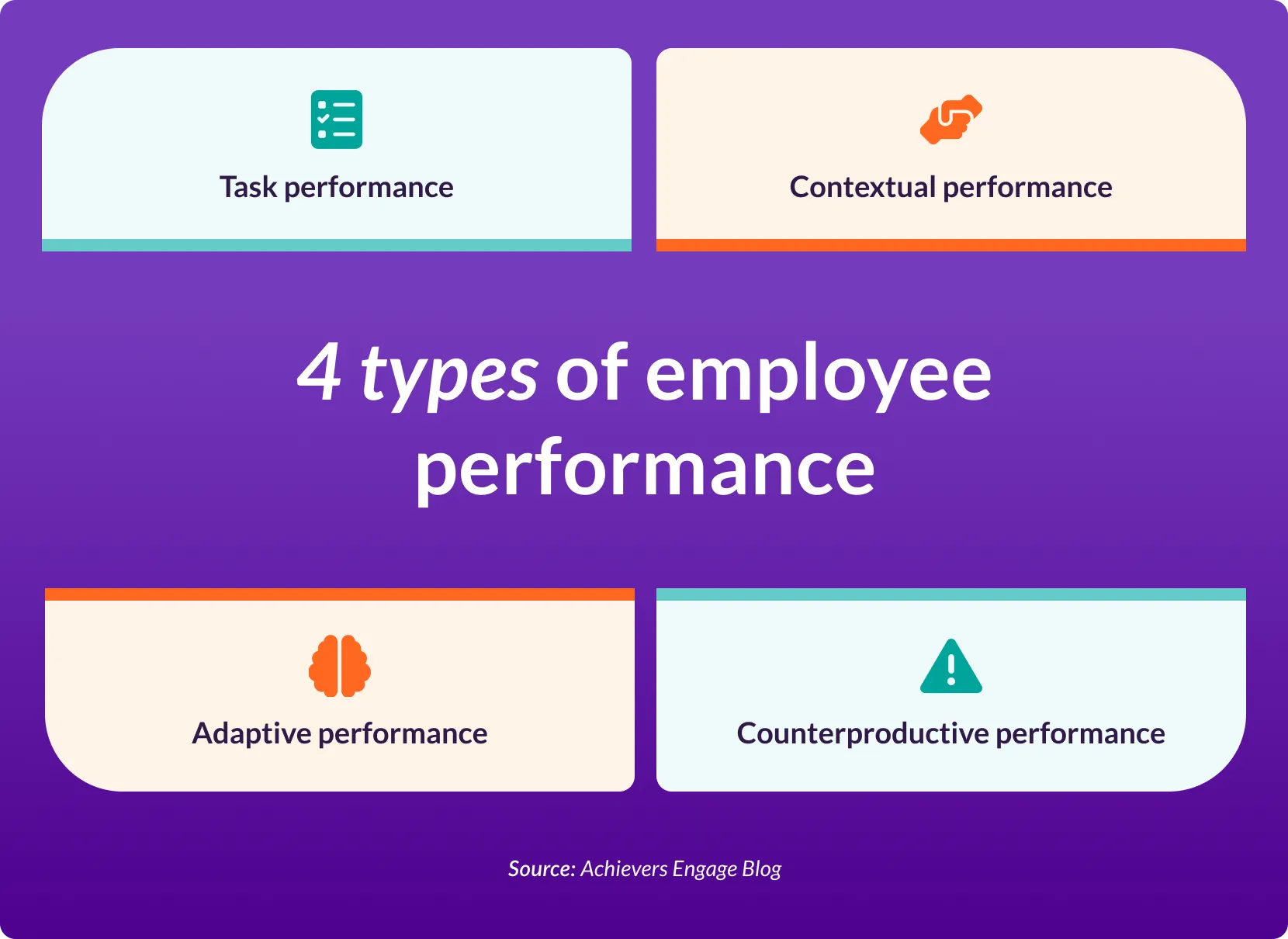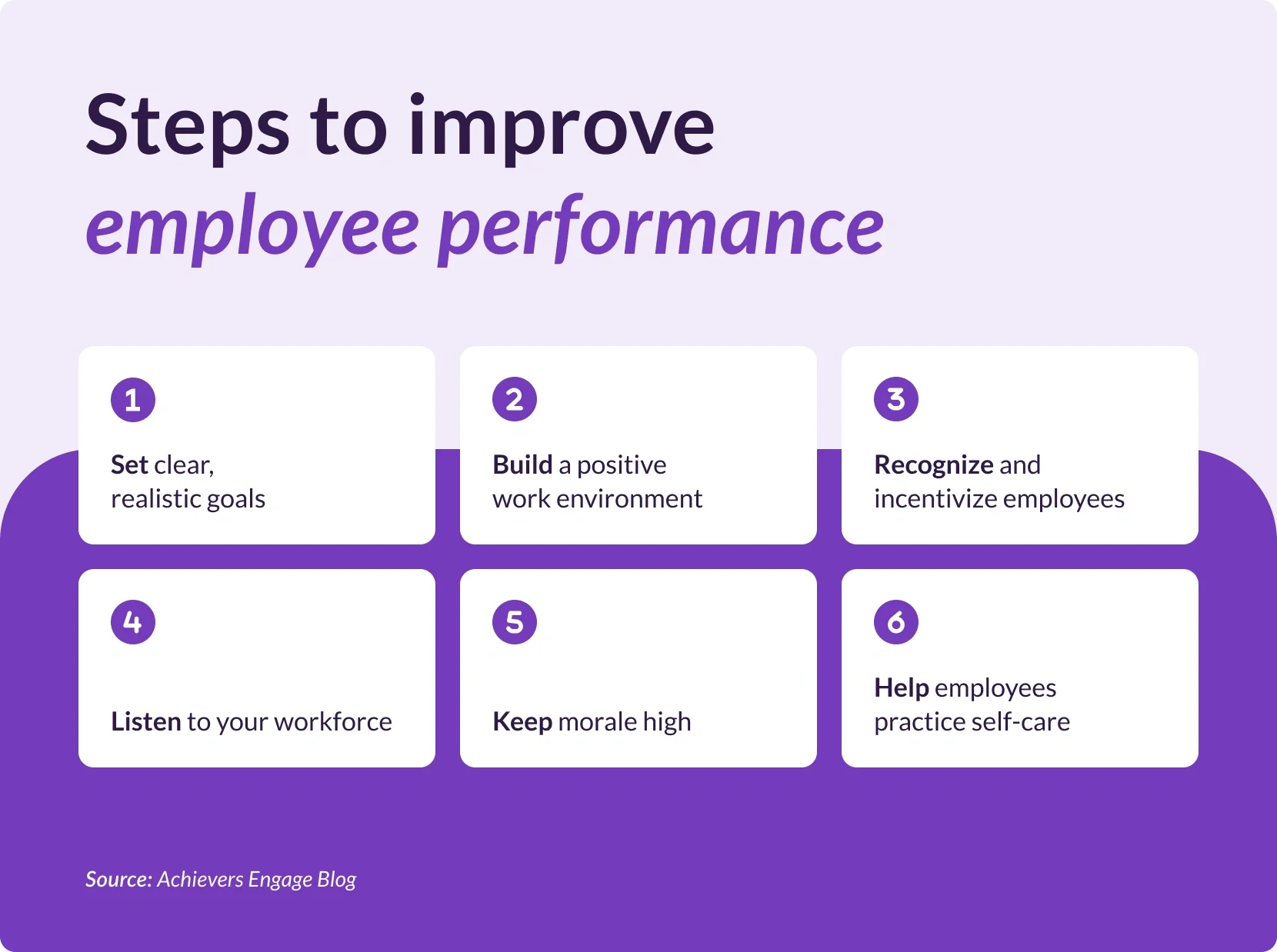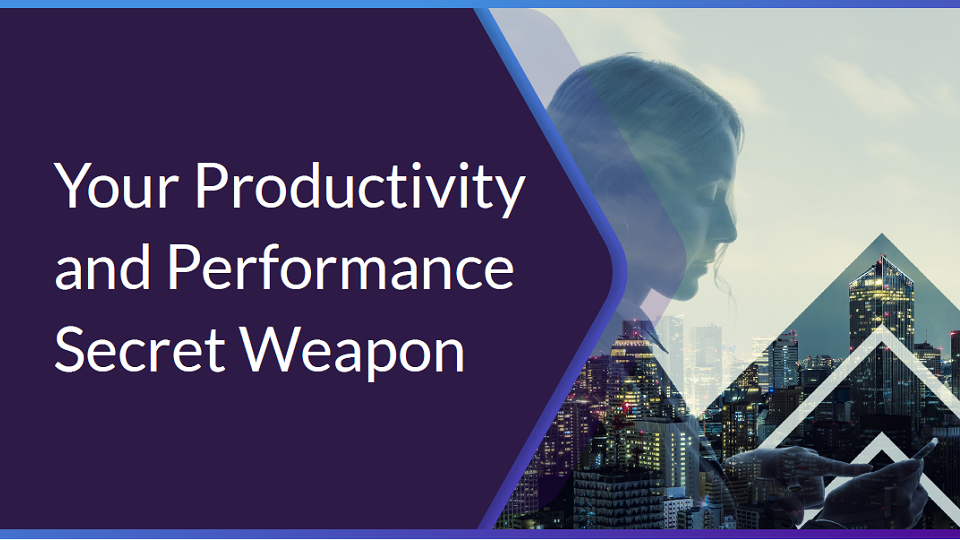Table of contents
Achieving new heights of success starts with a team of high-performing, engaged employees. But boosting performance isn’t as simple as flipping a switch — it requires a deep understanding of what drives motivation, productivity, and long-term commitment. Each employee’s performance is shaped by a unique blend of factors, including recognition, feedback, and career development, making it a complex challenge to measure and improve.
The good news though, is that with the right strategies and tools, you can unlock your team’s full potential. Dive into these expert tips to discover actionable ways to elevate performance across your organization.
What is employee performance?
Employee performance is how well employees meet job responsibilities and drive company goals. It covers work quality, efficiency, and teamwork. Top performers solve problems, hit targets, and adapt quickly. Understanding performance is key to boosting productivity and growth. By recognizing strengths and gaps, companies can improve and achieve their objectives.

What are the four types of employee performance?
To drive productivity and reach strategic goals, understanding the different types of employee performance is essential. Employee performance generally falls into four categories:
1. Task performance: How well employees carry out their core duties and responsibilities.
2. Contextual performance: Behaviors that enhance the workplace, like teamwork, cooperation, and going above and beyond the job description.
3. Adaptive performance: An employee’s ability to adjust to change, learn new skills, and navigate unpredictable situations.
4. Counterproductive work behavior: Actions that harm the organization, such as absenteeism, tardiness, or unethical conduct.

10 steps to improve employee performance
Once you’ve narrowed down the ways you plan to measure employee productivity, it’s time to start improving it. Here are 8 steps you can take to boost work performance.
1. Set clear, realistic goals — and hold people to them
Employees can’t exceed expectations if those expectations are unclear or unrealistic. To foster growth, set goals that are both ambitious and achievable, and provide clear metrics for tracking progress. During performance reviews, managers should revisit these goals and evaluate performance using feedback from peers, department heads, and clients, along with any awards or recognitions the employee has received.
Accountability is essential at all levels, including for managers. Senior leaders should set the tone by seeking and acting on 360-degree feedback, demonstrating that employee opinions are valued, and that feedback is a two-way street. This is especially important when you consider that employees are 3.6 times more likely to be committed to their organization when they have clear goals.
If goals aren’t met, managers should delve into the reasons behind them. Approach these discussions with a positive and constructive mindset, offering specific feedback and focusing on support. Collaboratively develop an action plan to address any gaps and ensure the employee can meet future goals, ultimately helping them grow and succeed in their role.
2. Build a positive work environment and culture
Culture plays a pivotal role in employee effectiveness and retention. A toxic work culture can lead to demotivation, burnout, and significantly higher turnover rates. In contrast, companies with positive work cultures experience 31% lower employee turnover rates and benefit from a dramatic 65% reduction in overall turnover. Cultivating an environment of positivity, recognition, and teamwork contributes to healthier and happier employees.
Building a high-performance culture goes beyond merely posting a mission or vision statement. It involves defining inspiring company values and consistently recognizing employees who embody these values. A strong culture should foster psychological safety by emphasizing mutual respect, interpersonal trust, and support for employees’ mental, emotional, and physical well-being. Employees should feel comfortable being themselves and fully engaged in their work.
An inclusive and supportive culture is especially crucial during challenging times. By keeping employees informed and inspired, companies can navigate crises more effectively, ensuring that teams tackle challenges together and remain resilient.
3. Recognize and incentivize employees
Recognizing and rewarding employees effectively boosts their energy and effort. According to a survey by the Incentive Research Foundation, companies using incentives report 89% higher engagement, 87% higher retention, and 85% higher loyalty. For recognition to be impactful, it should be specific, frequent, and timely, linking praise directly to actions and behaviors. This approach encourages positive behavior and builds trust among colleagues.
Integrate both monetary and social recognition into your strategy. A points-based rewards system lets employees choose from a rewards catalog, offering autonomy and integrating recognition into their daily routines. This method motivates employees by offering them personalized rewards.
Social recognition, like shout-outs during meetings or highlighting achievements, can be highly effective. Encouraging peer-to-peer recognition strengthens team spirit, gives everyone a voice, and boosts self-esteem. A mobile-friendly recognition platform ensures that recognition is seamless and easily accessible.
Additionally, creative incentives like charity donations, extra paid time off (PTO) for volunteering, or celebrating milestones with unique experiences can further enhance motivation and work performance.
4. Listen to your workforce
To maximize employee productivity, understanding their struggles and ideas is crucial. Managers trained in active listening have seen a 30% boost in employee satisfaction and up to a 25% increase in collaboration and productivity. Active listening has also improved sales performance by 8%.
Create opportunities for employees to share their perspectives and concerns safely. Surveys are an excellent tool for gathering insights on engagement factors like alignment and recognition, while open-ended questions can reveal deeper insights. For immediate feedback, use AI-powered HR chatbots, which offer a confidential way for employees to provide frequent updates.
Collecting feedback is just the beginning. Managers must analyze and act on this information to show employees their voices matter and influence decisions. Use an engagement solution that anonymizes data to ensure objective analysis.
Teach managers to prioritize feedback using analytics from your engagement platform. Focus on one or two key issues each quarter and develop collaborative plans with direct reports. This structured approach ensures that feedback leads to meaningful improvements and demonstrates commitment to employee input.
5. Keep morale high
High employee morale drives engagement, while poor morale can lead to turnover, disempowerment, and health issues. Low morale is also contagious, so maintaining high levels is crucial for organizational performance. One effective way to boost morale is through recognition. According to Achievers Workforce Institute, providing recognition at least monthly can double employee engagement with the company.
Creating a culture of recognition starts with leadership. Leaders should frequently acknowledge employees in memorable and meaningful ways. This approach not only raises morale but also fosters a positive work environment.
In addition to recognition, supervisors should avoid micromanaging. Instead, they should empower employees to take initiative, provide necessary resources, and trust them to meet deadlines. Effective communication and attentive listening to employee feedback are also essential for maintaining high morale and ensuring that employees feel valued and supported.
6. Help employees practice self-care
Addressing employees’ emotional and mental health is crucial for preventing burnout. With 57% of workers reporting negative impacts such as emotional exhaustion, irritability, and anger due to work-related stress, it’s evident that burnout significantly affects well-being and productivity.
Implement comprehensive wellness programs to support employees in developing healthy habits, including regular exercise, adequate sleep, and nutritious meals. Use employee rewards platforms to track progress towards health goals and recognize employees who consistently engage in positive wellness activities each month. This not only promotes well-being but also boosts overall productivity.
Support mental health by providing access to meditation apps like Headspace or Calm, or organizing in-house meditation sessions. Mindfulness practices help employees manage stress more effectively, enhance adaptability, and increase empathy, which positively influences both company culture and client interactions.
Additionally, encourage employees to fully utilize their time off. Taking breaks to connect with family and friends allows employees to distance themselves from work pressures and return rejuvenated. Promoting a healthy work-life balance ensures employees come back refreshed, ready to contribute their best to the organization.
7. Support training and professional development
Investing in professional development is crucial for retaining top talent and enhancing workforce performance. In fact, 94% of employees are more likely to stay with companies that actively support their growth. Continuous learning helps employees acquire the skills needed for more impactful roles and career advancement.
To support employee development, consider a variety of approaches. Send employees to industry conferences or training programs to introduce them to best practices and innovative technologies. Offer scholarships for further education or cover certification exam costs to help them gain new expertise.
Additionally, provide one-on-one coaching sessions with executives. These personalized interactions offer tailored advice and help employees build valuable relationships with key business leaders. Train managers to embrace a coaching mentality as well, which can boost team confidence, strengthen rapport, and foster a sense of belonging.
By prioritizing professional development, you not only enhance employee skills but also increase retention and satisfaction, ensuring your team remains motivated and committed.
8. Support your employees with the best tools
Implementing effective engagement and recognition practices can be challenging but employee engagement tools can simplify the process. These user-friendly platforms enhance both employee and customer experiences, offering easy integration and quick learning curves. HR teams can efficiently train leaders and employees to utilize these tools effectively.
For example, Achievers provides robust engagement tools that help leaders collect and analyze data to drive performance improvements. Continuous feedback features offer real-time insights into team dynamics, enabling managers to adapt swiftly and lead effectively. These data-driven tools support the creation of actionable plans based on solid insights.
Recognition is also critical, and the right platform makes it both straightforward and enjoyable. Opt for a solution that combines social and points-based recognition, allowing employees to like, comment, and award points to appreciation messages. Additionally, seamless integration with popular communication and HR tools and compatibility with your engagement platform ensures a cohesive and impactful recognition experience.
9. Encourage cross-functional collaboration
Silos within an organization can hinder efficiency, limit innovation, and slow down problem-solving. Encouraging cross-functional collaboration ensures employees leverage diverse expertise and perspectives to tackle challenges more effectively. When teams work together across departments, they develop a stronger sense of shared purpose and uncover creative solutions that wouldn’t emerge in isolated environments.
To foster collaboration, leaders should provide opportunities for employees to work on cross-functional projects, such as task forces or innovation sprints, that bring together individuals with different skill sets. Implementing collaboration tools like shared workspaces, project management platforms, and team messaging apps can make communication across teams more seamless.
Encouraging mentorship and knowledge-sharing between teams also strengthens relationships and enhances professional growth. Additionally, leadership should set the example by actively promoting collaboration and ensuring that teams have the resources, support, and autonomy needed to drive meaningful results together.
Companies that embrace cross-functional teamwork experience higher engagement, faster problem-solving, and increased adaptability, positioning themselves for long-term success.
10. Provide ongoing coaching and feedback
Traditional annual performance reviews are no longer sufficient in today’s fast-paced work environment. Employees need ongoing coaching and real-time feedback to continuously improve, stay motivated, and adapt to changing business needs. Frequent feedback ensures employees know where they stand, what they’re doing well, and where they can improve — all while feeling supported rather than evaluated.
Encourage managers to adopt a coaching mindset rather than simply evaluating performance. This means having regular one-on-one check-ins with employees to discuss progress, challenges, and development opportunities. Instead of focusing solely on past performance, these conversations should be future-focused, helping employees set new goals and build their skills.
Organizations can also leverage AI and engagement platforms to gather continuous insights and provide personalized guidance based on employee behavior and performance. Peer feedback should also be encouraged, as it fosters a culture of collaboration, trust, and shared accountability.
Employees who receive frequent coaching and constructive feedback are more engaged, more productive, and more likely to grow within the organization — leading to better retention and overall business success.
Boost employee performance with Achievers
Achieving peak employee performance isn’t just about setting high expectations—it’s about creating an environment where employees feel motivated, supported, and recognized for their contributions. When companies invest in clear goal-setting, meaningful recognition, and continuous feedback, they empower their workforce to excel.
Achievers makes it easier than ever to foster a culture of recognition, engagement, and performance. With real-time feedback tools, seamless integrations, and a robust rewards platform, Achievers helps organizations inspire employees to do their best work every day. By prioritizing engagement and leveraging the right tools, businesses can drive lasting performance improvements that fuel both individual growth and company success.
Ready to take your team’s performance to the next level? Discover how Achievers can help you build a high-performing, engaged workforce today.



